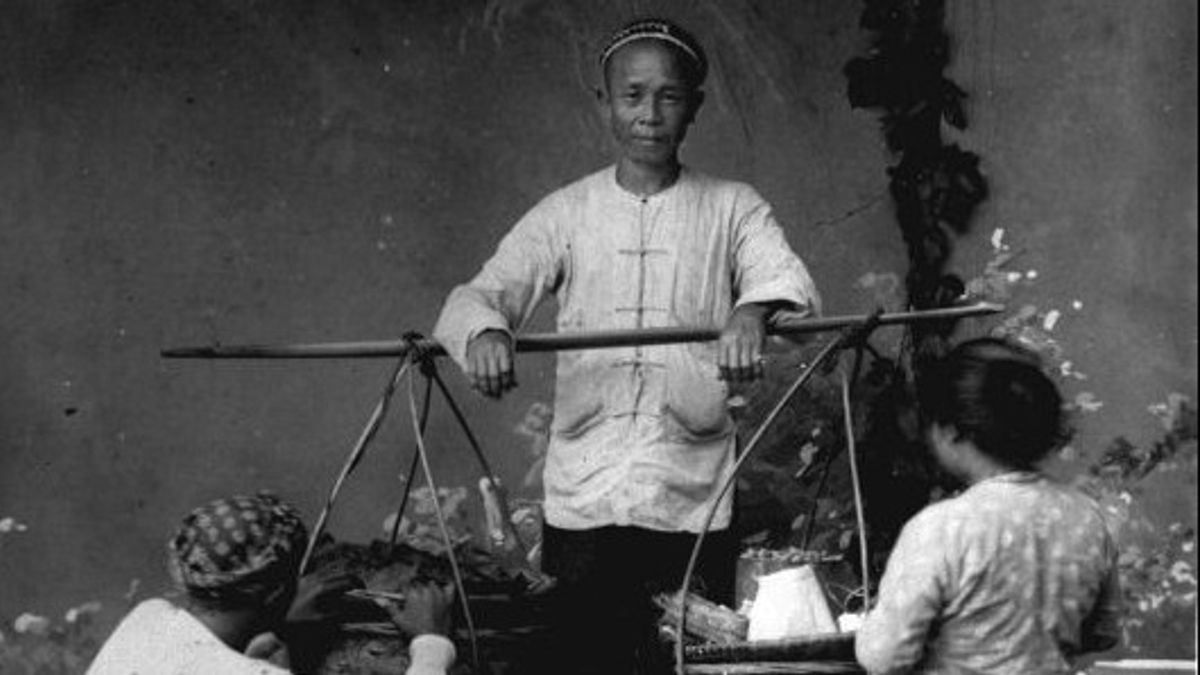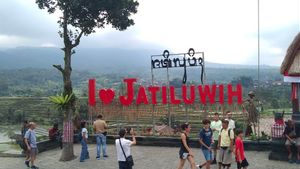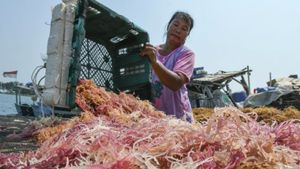JAKARTA - The Chinatown civilization in Indonesia is marked by the massive migration of ethnic Chinese to the archipelago. They are transformed into important actors driving the wheels of the economy. A series of Javanese kings have recognized their work. This assumption continues until now, how China is considered a 'friend' country of Indonesian commerce. This is the story of the beginning of Indonesia's servitude to China in trade.
Based on history, Chinese traders have come to the coastal areas of the South China Sea since three hundred years BC. Even so, Chinese traders were only recorded visiting the archipelago in the 11th century. The presence of Chinese traders in Indonesia has become a sign of the importance of the South China Sea as a trade route. Southeast Asian countries, including Indonesia, are big consumers of the supply of Chinese goods.
“Indian and Chinese clothing was bought by a wealthier elite for its brilliant colors, beautiful patterns, and its position as a rare item. But the local population generally always wears locally produced clothes, ”said Anthony Reid in the Southeast Asia book in Kurun Niaga 1450-1680 Volume I: Land under the Wind (2014).
Therefore, those who initially only lived for a short period of time, gradually began to feel comfortable living in the Land of the Emerald Equator. They even settled and married local residents. Then the Chinese played a very important role for economic and social life in the interior of the Javanese kingdoms.
The important role of the Chinese peopleChinese trade provided a large source of annual income for the Javanese kingdoms until the 17th century. According to historian Peter Carey, this is proof that the Chinese have succeeded in mastering key positions in the export trade of rice and teak in Java.
“Tumenggung Wiroguno, an employee who later emerged as the most influential figure in the Palace (Mataram) during the last years of Sultan Agung's reign (1613-1646), seems to have gained strong power as a result of extensive trading activities. This can be done thanks to his ability to use intermediary Chinese and rice dalal to regulate export sales in Batavia, "said Peter Carey in the book Orang Cina, Bandar Tol, Opium, & the Java War (2008).
The dependence on the Chinese people continues. Because they were so dependent, both the Dutch VOC and the Javanese rulers needed the Chinese with all their activities in the trade sector. The need for the role of the Chinese is reflected in the special administrative and legal positions given to them.
Thus, in each of the main port cities and trading cities located on the banks of the river, a special shahbandar (toll and customs foreman) was appointed for the Chinese community, together with a shahbandar who took care of the native traders.

Historian Ong Hok Ham in the book Wahyu Yang Hilang, The Land of Shakes (2018) describes the position of Chinese people who are considered important in the archipelago. According to Ong, the specialness of the Chinese can be seen from the position of Chinese officers as holders of pacht (purchase / lease rights). In the nineteenth century they became state instruments and were free from road documents and the obligation to live in Chinatowns.
"They use this opportunity to trade, so that pacht holders are a source of work and at the same time patronage (employers) in Chinatown. They are the ones who ultimately decide who will be employed on the pacht, which means they are free to stay in the interior and have the opportunity to trade, ”wrote Ong Hok Ham.
Another extraordinary relationship between the Javanese rulers and the Chinese is reflected in the traditional Javanese indang laws. In which case, the law stipulated that the diyat fine - blood money - imposed for the murder of a Chinese person must be twice as large as that of killing a Javanese.
Dacin and swipoaThere is something interesting about the arrival of Chinese traders to the archipelago. Every Chinese trader is known to always carry two very distinctive tools in every trading activity on earth. The tool is a one-tray scale (dacin) for weighing, and swipoa for calculating.
Quoted from Denys Lombard in the book Nusa Jawa Cross Culture Volume 2: Asian Networks (2005), it is known that one-tray scales, which in Malay are called dacin (Chinese: dacheng), have been recorded in Sumatra since the end of the 16th century. Frederick de Houtman, said Denys Lombard, called dacin the main tool for the Chinese to weigh pepper in Aceh. For that, the dacin in question must be a large caliber device, because it is said that the tool must be hung on a support so that it can measure a half bahar weight (about 70 kilograms).
Meanwhile, swipoa is a tool for calculating which comes from the Chinese word Suanpan. The most ancient mention of swipoa has been found in the Voyage of British Captain Beeckman who visited Kalimantan in 1714. He then recorded many new things about the traders in Banjarmasin.
“The Banjar people collect numbers or calculations, as the Chinese do, with small objects like Butlon prints, on various sticks which are placed in two boxes, in one box. This they push up and down very nimbly with their fingers, and very precise and fast, "added Beeckman quoted by Denys Lombard.
Not only that, Denys Lombard also recorded information from the Comte de Hogendorp who visited Batavia around 1830. According to him, even the smallest Chinese traders in Batavia had trade books that were always filled in carefully. Hogendorp is even joking: it's hard to imagine that trade books were compiled by Chinese people without swipoa's help.
The English, Chinese, Japanese, Arabic, and French versions are automatically generated by the AI. So there may still be inaccuracies in translating, please always see Indonesian as our main language. (system supported by DigitalSiber.id)













